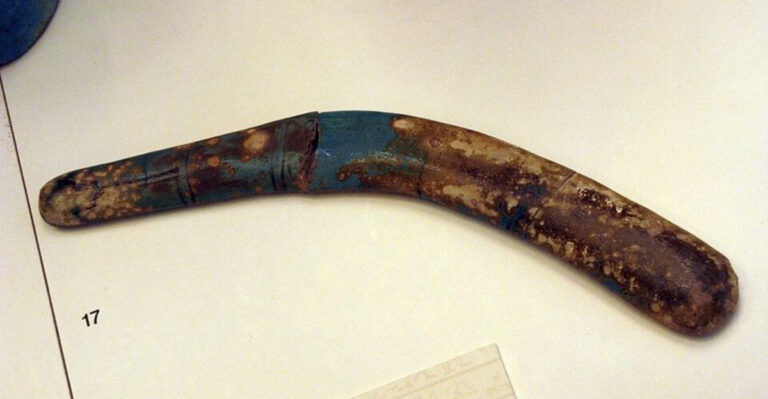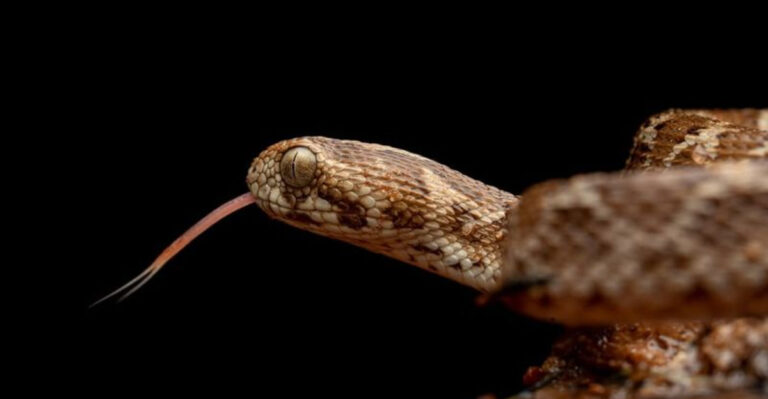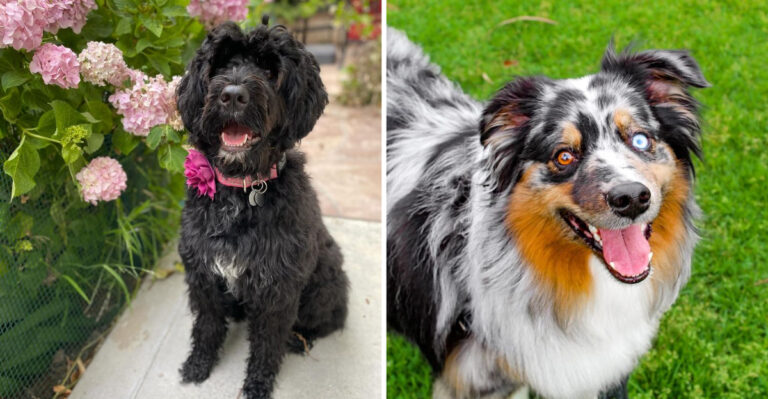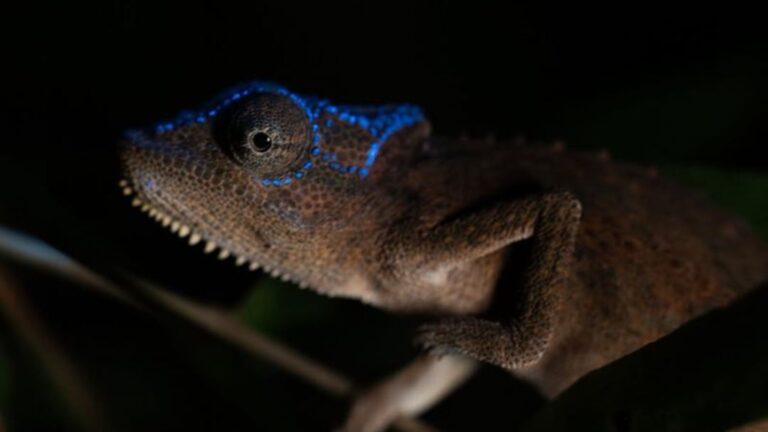15 Fascinating Hybrid Animals That Will Blow Your Mind
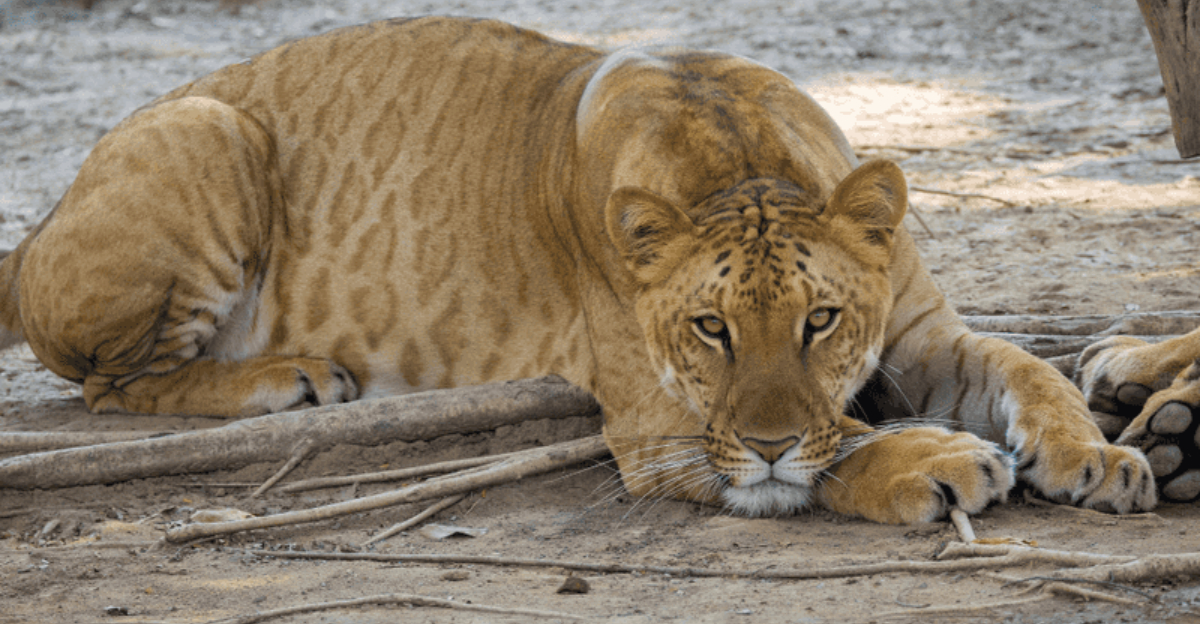
Nature loves to experiment, and sometimes the results are truly extraordinary. When different species crossbreed, they create animals with unique characteristics that seem almost magical.
These hybrid creatures combine the best features of their parent species, resulting in animals that look like they stepped right out of mythology or science fiction.
1. Grizzly-Polar Bear Hybrids (Pizzlies)
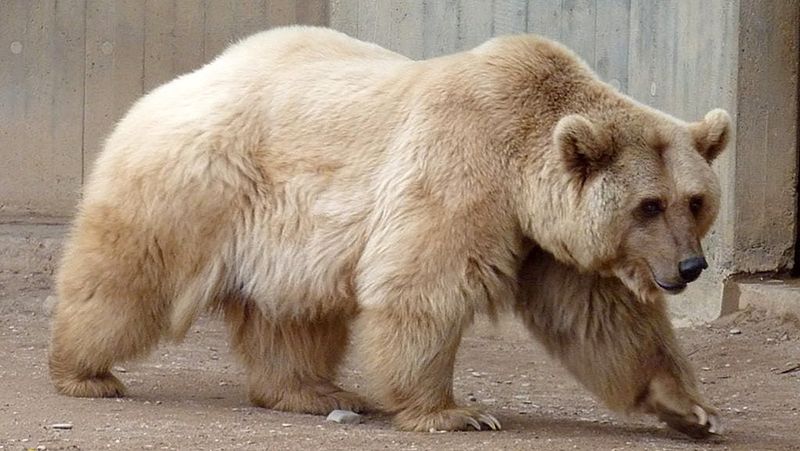
Climate change has created an unexpected romance story. As warming temperatures push polar bears south and grizzlies north, these once-separated species now meet and mate in overlapping territories.
Pizzlies (or grolars) inherit the polar bear’s cream-colored fur with the grizzly’s hump and brown patches. These rare bears have been spotted with increasing frequency in Alaska and Canada’s northern regions.
2. The Swift Coywolf
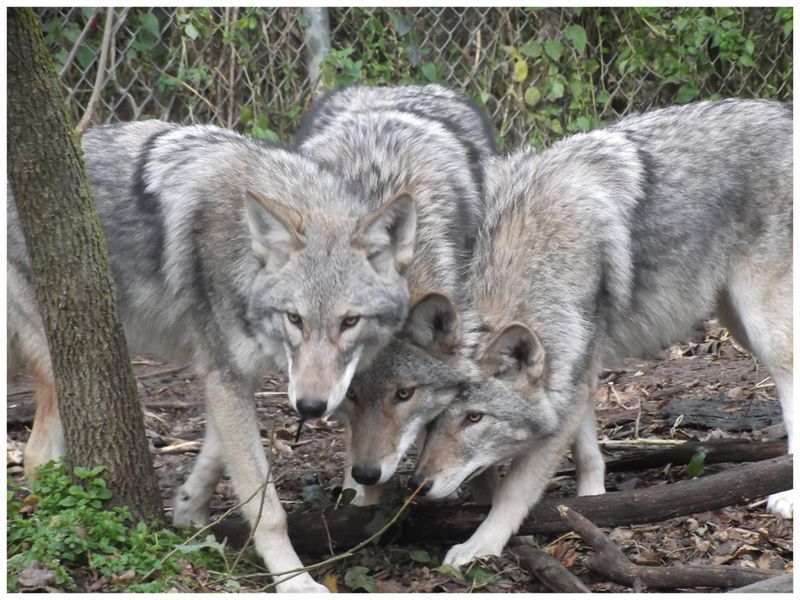
Evolution is happening right before our eyes with these urban-adapted survivors. Coywolves blend coyote stealth with wolf strength, creating a predator perfectly suited for life in America’s northeastern forests and suburbs.
Larger than coyotes but smaller than wolves, these clever hybrids hunt in packs or alone. Their mixed genetics give them a diverse diet and remarkable adaptability to human-altered landscapes.
3. The Majestic Liger
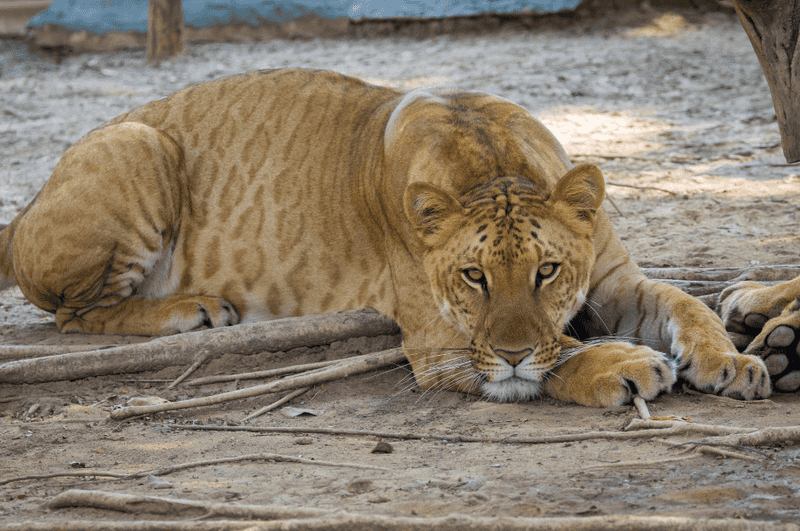
Twice the size of a normal lion, these magnificent giants can weigh over 900 pounds! Ligers are born when male lions and female tigers mate, creating the world’s largest cats.
With their tiger-like stripes and lion-like manes, ligers enjoy swimming (a tiger trait) while being social like lions. Unlike many hybrids, some female ligers can actually reproduce.
4. Wholphins: Ocean’s Rarest Blend

Imagine a dolphin that’s bigger, darker, and has fewer teeth than normal. That’s a wholphin – the incredible offspring of a false killer whale and bottlenose dolphin!
With only a handful ever documented, these rare marine mammals split the difference between their parents. They have 66 teeth (dolphins have 88, false killer whales have 44) and their sleek bodies sport a gorgeous gunmetal gray color.
5. The Nimble Zebroid
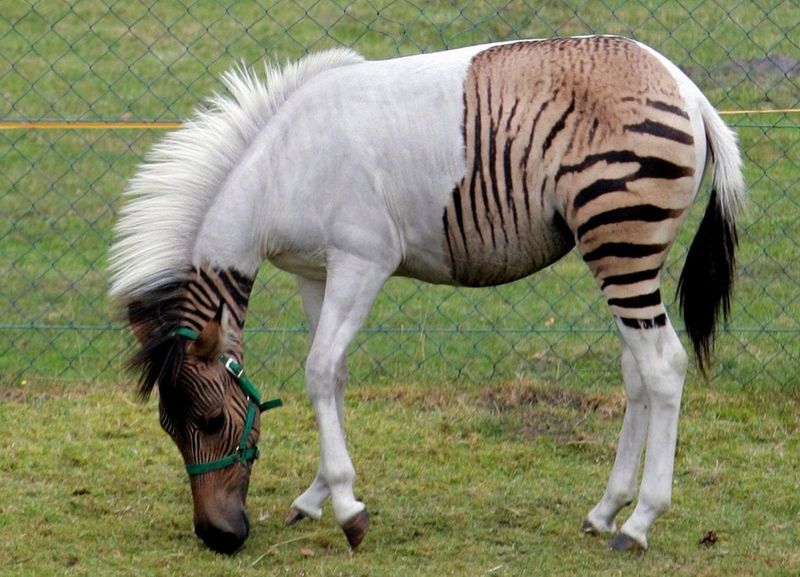
Sporting the ultimate fashion statement in the animal kingdom, zebroids turn heads with their partial striping patterns. These eye-catching equines result from crossing zebras with horses or donkeys.
Unlike their wild zebra parents, zebroids can be trained for riding or pulling carts. Each individual shows a unique pattern – some with bold stripes on their legs and face, others with faint shadowy markings across their entire body.
6. Beefalo: The Sustainable Meat Source
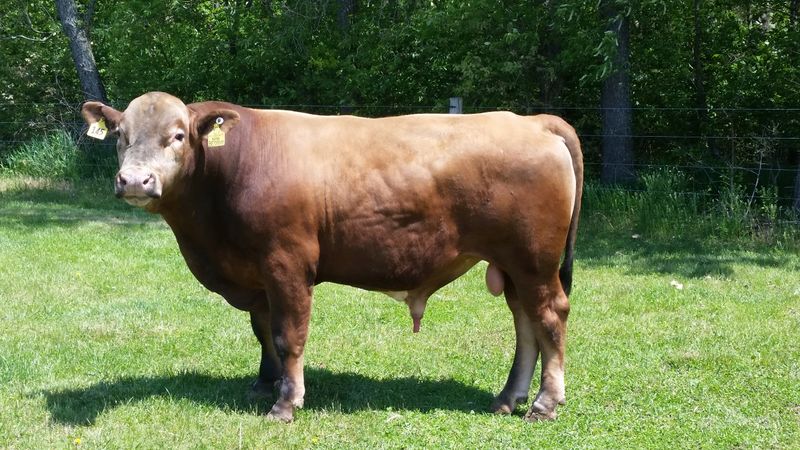
Ranchers struck gold when they crossed bison with domestic cattle. The result? Beefalo – a hardy animal producing leaner, healthier meat with less cholesterol than regular beef.
These resilient creatures thrive in harsh conditions where cattle struggle. With 3/8 bison genetics, beefalo require less water and feed while resisting disease better than pure cattle.
7. The Striking Blood Parrot Cichlid
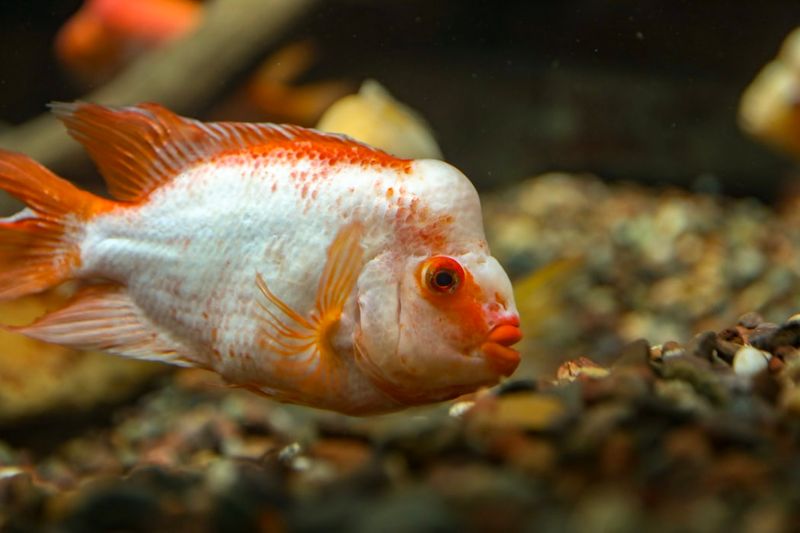
Controversy swims alongside these flame-colored fish with their permanently open mouths. Created by crossing several cichlid species, blood parrots can’t fully close their jaws – making feeding challenging.
Despite ethical debates about breeding animals with deliberate deformities, these vibrant orange swimmers remain hugely popular in aquariums. Their round bodies, heart-shaped tails, and puppy-like personalities have won many fans in the fish-keeping community.
8. The Powerful Mule

Ancient Romans called them “the most stubborn creatures on Earth” – but that reputation hides their true value. Mules combine the strength and size of horses with the endurance and sure-footedness of donkeys.
These intelligent hybrids have carried soldiers into battle and pioneers across mountains for thousands of years. Though almost always sterile, their exceptional longevity (often living 40+ years) and resistance to disease make them invaluable working animals worldwide.
9. Cama: The Camel-Llama Wonder

Scientists played matchmaker between camels and llamas using artificial insemination, creating an animal with the strength of a camel but the gentle temperament of a llama. Standing taller than llamas but shorter than camels, camas have short ears and a fluffy coat.
Why create them? Researchers hoped to produce an animal with valuable camel wool that could be easily managed like a llama, potentially revolutionizing fiber production in harsh environments.
10. The Savannah Cat: Wild Beauty at Home

Feline royalty struts through living rooms in the form of Savannah cats. Crossing African servals with domestic cats creates these spotted beauties that can leap 8 feet high from a standing position!
First-generation Savannahs retain wild traits – they’re curious, highly active, and often enjoy water. Later generations become more domesticated while keeping their striking spotted coats, slender bodies, and oversized ears that give them an exotic appearance.
11. Narluga: The Arctic Mystery

Hidden in the icy Arctic waters, a strange skull puzzled scientists for decades. DNA analysis finally revealed its owner – a narluga, the offspring of a narwhal and a beluga whale!
With teeth unlike either parent, these rare hybrids show a completely unique feeding strategy. Their skull shape suggests they used their unusual teeth to grind hard prey against the seafloor, demonstrating how hybridization can create novel adaptations.
12. The Wolf-Dog Connection

Walking the line between wild and domestic, wolf-dogs blend ancient instincts with companion-animal traits. These controversial hybrids vary dramatically – some look like wolves but behave like dogs, while others appear dog-like but retain wild behaviors.
Ownership is heavily regulated or banned in many areas due to unpredictable temperaments. Despite challenges, dedicated owners with proper knowledge and facilities report forming deep bonds with these complex animals that connect us to our earliest partnership with wolves.
13. The Hinny’s Hidden Talents

Often confused with mules, these equine marvels flip the genetic script. Hinnies result from male horses breeding with female donkeys (the opposite of mules), creating animals with more horse-like characteristics.
Smaller than mules but incredibly tough, hinnies thrive in harsh conditions where other equines struggle. Their compact size makes them perfect for navigating narrow mountain trails, while their patient temperament suits them for working with children in therapeutic riding programs.
14. The Jaglion’s Surprising Origin

Born through an unexpected romance at a Canadian wildlife sanctuary, jaglions stunned keepers when a jaguar and lion produced cubs. The sanctuary’s staff had never imagined their friendship would lead to offspring!
Male jaglions inherit the jaguar’s rosette patterns overlaid with the lion’s tawny coloration. Females display an even more striking appearance – they can develop partial manes, a feature typically reserved for male lions.
15. The Geep: Sheep-Goat Anomaly

Farmers occasionally witness a genetic rarity that shouldn’t exist. Sheep and goats diverged evolutionarily 4 million years ago, making successful hybrids extremely uncommon – yet geeps occasionally appear!
These woolly oddities typically show goat-like legs and faces combined with partial sheep’s wool. Most don’t survive long, but a few documented cases have thrived into adulthood, baffling scientists with their very existence and challenging our understanding of species boundaries.

